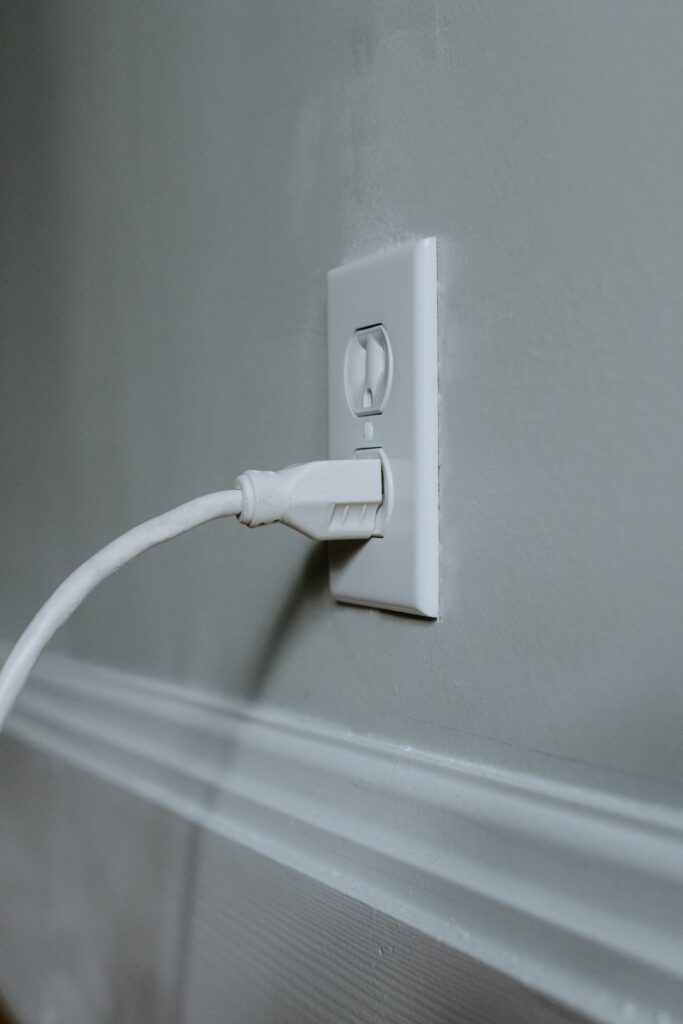Have you ever wondered what the most affordable form of electricity to produce is? well, look no further! In this article, we will explore the various types of electricity generation methods and reveal the one that won’t break the bank. Whether you’re a budget-conscious consumer or simply curious about the world of energy, this information will surely enlighten you. So let’s dive in and uncover the mystery behind the cheapest form of electricity to produce!
Understanding the Cost of Electricity Production
Electricity is a vital resource that powers our modern world, but have you ever wondered how much it actually costs to produce? The cost of electricity production varies depending on various factors, and in this article, we will explore and evaluate these factors to get a better understanding of the expenses involved.
Evaluating various factors affecting the production cost
There are several factors that contribute to the overall cost of electricity production. One of the major factors is the type of power generation technology used. Different technologies have varying costs associated with them, which we will discuss in more detail later in this article. Other factors include the cost of fuel or raw materials, the efficiency of the power generation system, the size and scale of the power plant, as well as the costs involved in the operation and maintenance of the plant.
Relationship between production expense and electricity selling price
The cost of producing electricity directly affects the selling price of electricity to consumers. Power generation companies need to cover their expenses and make a profit, so the cost of production plays a significant role in determining the selling price. However, it’s important to note that the selling price is also influenced by other factors such as government regulations, taxes, and market competition.
Review of investments required for setting up power production units
Setting up power production units requires substantial investments. The capital expenses involved include the cost of land, construction, and installation of the power plant equipment. The initial investment can vary widely depending on the type of power generation technology chosen. However, it is also necessary to consider the long-term benefits and potential cost savings associated with each technology.
Hydroelectric Power
Hydroelectric power is one of the oldest and most widely used forms of renewable energy. It harnesses the power of flowing water to generate electricity. The principle of hydroelectricity generation is relatively simple – it involves capturing the energy of falling or flowing water and converting it into electrical energy using turbines and generators.
Operational and maintenance expenses involved in hydroelectric power are generally low compared to other forms of power generation. Once the infrastructure is built, the main ongoing cost is related to regular maintenance and occasional equipment upgrades. Additionally, hydroelectric power plants have a long lifespan, which further reduces the overall cost per unit of electricity generated.
The investment required for setting up a hydroelectric power plant can be significant, especially for larger projects. It involves constructing dams, reservoirs, and other infrastructure to harness the power of water. However, the long-term cost-benefit analysis often proves favorable for hydroelectric power, as the fuel source (water) is free, and the environmental impact is relatively minimal compared to other sources.

Wind Power
Wind power is another increasingly popular form of renewable energy. It involves harnessing the power of wind through wind turbines to generate electricity. The geographical location plays a crucial role in the effectiveness of wind power generation. Areas with higher wind speeds are more favorable for wind power production.
The operational costs of wind power are relatively low compared to conventional power generation methods. Once the wind turbines are installed, the main expenses are related to ongoing maintenance and repairs. However, it is important to consider the intermittency of wind as a power source, which can affect the overall efficiency and reliability of wind power generation.
When comparing the cost of wind power to other renewable sources, it is important to consider the decreasing cost of wind turbine technology. Technological advancements have made wind power more cost-effective over time, contributing to the overall reduction in its production costs. Additionally, wind is a free and abundant resource, making it a highly attractive option for sustainable and affordable electricity generation.
Solar Power
Solar power is a clean and abundant source of renewable energy that harnesses the power of sunlight to generate electricity. The working principle of a solar power plant involves capturing sunlight using solar panels made of photovoltaic cells. These cells convert sunlight into direct current (DC), which is then converted into alternating current (AC) using inverters.
The geographical location plays a significant role in solar power generation. Areas with ample sunlight throughout the year are ideal for maximizing the efficiency and output of solar power plants. However, even regions with moderate sunlight can still benefit from solar power, although the generation output might be lower.
The production costs associated with solar power include not only the installation of solar panels but also ongoing maintenance and occasional equipment replacements. The initial investment can be relatively high, mainly due to the cost of solar panels. However, the prices of solar panels have been steadily decreasing over the years, making solar power more cost-effective.

Nuclear Power
Nuclear power is a non-renewable source of energy that harnesses the energy released from nuclear reactions to generate electricity. The procedure of nuclear power generation involves the use of uranium or plutonium as fuel in a nuclear reactor. The heat produced from fission reactions is then used to generate steam, which drives a turbine connected to a generator.
Nuclear power requires significant capital expenses for setting up the infrastructure, including the construction of a nuclear reactor and the implementation of safety features. The initial investment for a nuclear power plant is considerably higher compared to renewable energy sources, primarily due to the complex and stringent safety measures required.
Maintenance and operational costs for nuclear power plants are also substantial. Strict safety regulations necessitate regular inspections, upgrades, and the safe disposal of nuclear waste. Additionally, decommissioning costs at the end of a nuclear power plant’s life cycle are another significant expense to consider.
When comparing the cost of nuclear power to non-renewable sources such as coal or natural gas, it is important to consider not only the direct financial costs but also the long-term environmental and health-related impacts. Nuclear power, while expensive, offers a relatively clean and low-carbon alternative to fossil fuels.
Fossil Fuel Power
Fossil fuel power plants utilize various types of fuels such as coal, natural gas, and oil to generate electricity. Each type of fossil fuel power generation has its own set of production expenses, depending on factors such as fuel availability, transportation, and environmental regulations.
The production expenses associated with fossil fuel power plants include the cost of fuel extraction, transportation, and combustion. Additionally, there are environmental costs to consider, such as pollution control measures and the cost of carbon emissions. Over time, the cost of fossil fuels is expected to rise due to diminishing reserves and increasing environmental concerns.
When comparing the cost of fossil fuel power to renewable sources, it is essential to consider the long-term financial, environmental, and health-related impacts. While fossil fuels may be cheaper in the short term, their finite nature and contribution to climate change make them less sustainable and cost-effective in the long run.

Renewable vs Non-renewable Power Generation Cost
Comparing the typical costs of renewable and non-renewable power production provides valuable insights into the overall affordability and sustainability of different energy sources. Renewable energy sources such as hydroelectric, wind, and solar power generally have higher initial investment costs but lower operational expenses compared to non-renewable sources.
Environmental factors also play a crucial role in determining the cost of power generation. Renewable energy sources have a smaller environmental footprint compared to non-renewable sources, which often require extensive extraction and combustion processes. The indirect costs associated with environmental damage, pollution, and climate change make non-renewable sources less cost-effective and sustainable in the long run.
The cost-efficiency of power generation over time is a key consideration when evaluating the affordability of different energy sources. Technological advancements have led to significant cost reductions in renewable energy technologies over the years. Furthermore, as economies of scale are achieved and more efficient systems are developed, the production costs of renewable energy are expected to decrease further, making it a more viable and cost-effective option in the future.
Effect of Technological Advancements on Power Production Cost
Technological advancements have played a pivotal role in reducing the production costs of various forms of power generation. Innovations in equipment design, materials, and manufacturing processes have led to more efficient and cost-effective power production methods.
Case studies of recent innovations in cost-effective power production highlight the potential impact of technology on reducing production costs. For example, advancements in wind turbine design have increased the efficiency and output of wind power generation. Similarly, improvements in solar panel technology have led to higher conversion rates and decreased manufacturing costs.
Looking ahead, the future holds promising opportunities for further reductions in power production costs through technological advancements. Research and development efforts continue to focus on improving the efficiency of renewable energy systems, energy storage technologies, and grid integration. These advancements are expected to contribute to the overall affordability and sustainability of power generation.
Global Examples of Cheap Electricity Production
When it comes to cheap electricity production, different countries excel in utilizing specific energy sources based on their geographical location and available resources. Investigating countries with the lowest electricity production costs provides insights into the influence of geographic location and resource availability on power generation expenses.
For example, countries with abundant water resources often have lower electricity production costs due to their reliance on hydroelectric power. Norway is a prime example, with over 90% of its electricity production coming from hydroelectric sources. Similarly, countries with vast wind resources, such as Denmark and Germany, have been able to capitalize on wind power generation and achieve relatively low production costs.
It is interesting to note the global shift towards renewable energy sources as countries recognize the economic and environmental benefits they offer. The declining costs of renewable energy technologies, coupled with the urgency to combat climate change, have prompted many nations to invest heavily in renewable energy infrastructure. This transition is expected to further drive down electricity production costs on a global scale.
The Future of Cheap Electricity Production
Looking towards the future, affordable power generation holds great promise as technology continues to advance and governments prioritize renewable energy. The quest for cheap electricity production is heavily influenced by the growing concerns about climate change and the need to transition away from fossil fuels.
The influence of climate change on electricity production cannot be ignored. As governments and international organizations tighten regulations on carbon emissions, non-renewable energy sources are likely to become more expensive due to the implementation of stricter environmental standards. This, in turn, will further incentivize the adoption of renewable energy technologies.
The potential for new technologies to further reduce production costs is significant. Research and development efforts are continuously focused on improving the efficiency of existing renewable energy technologies and developing innovative solutions for power generation. Emerging technologies such as tidal power, geothermal energy, and advanced energy storage systems hold promise for affordable and sustainable electricity production in the future.
In conclusion, understanding the cost of electricity production involves evaluating various factors such as the type of power generation technology, operational expenses, and investments required. Renewable energy sources like hydroelectric, wind, and solar power offer increasingly cost-effective alternatives to non-renewable sources. Technological advancements and a global shift towards renewable energy further contribute to the affordability and sustainability of power generation. With continued efforts and investments, the future of cheap electricity production looks bright, paving the way for a cleaner and more affordable energy future.




